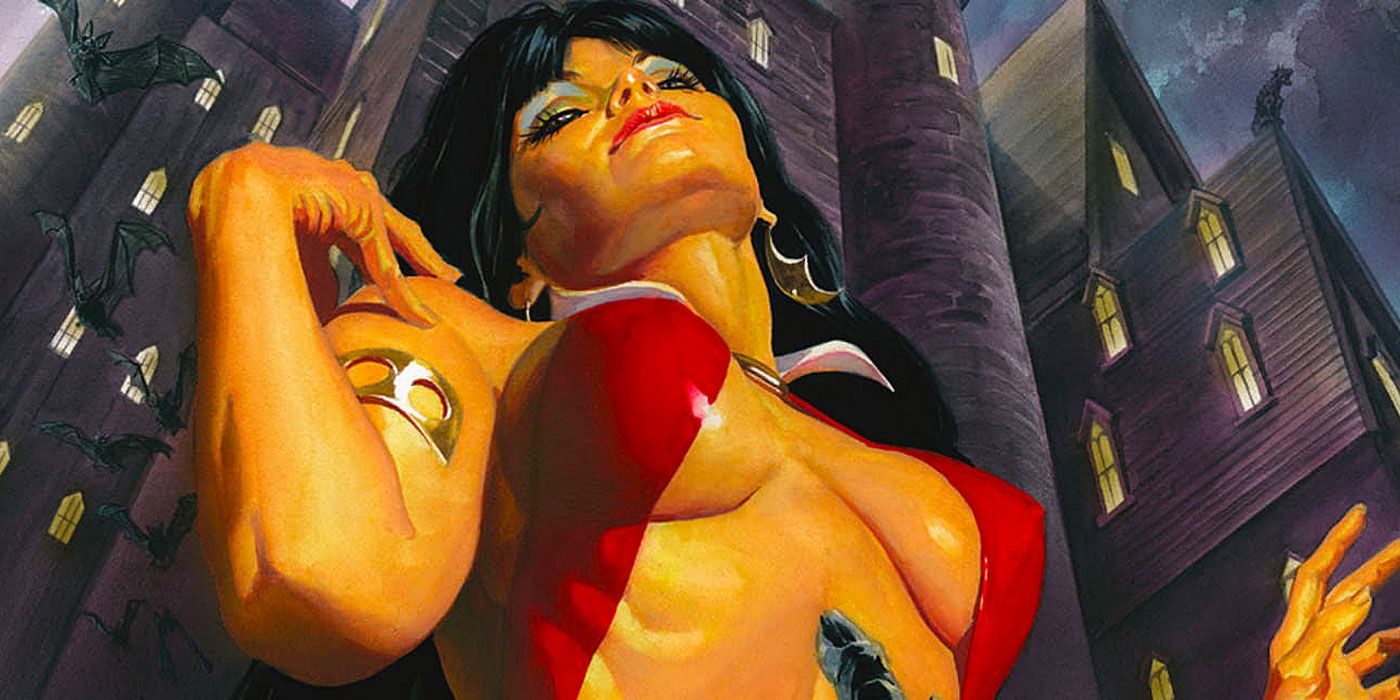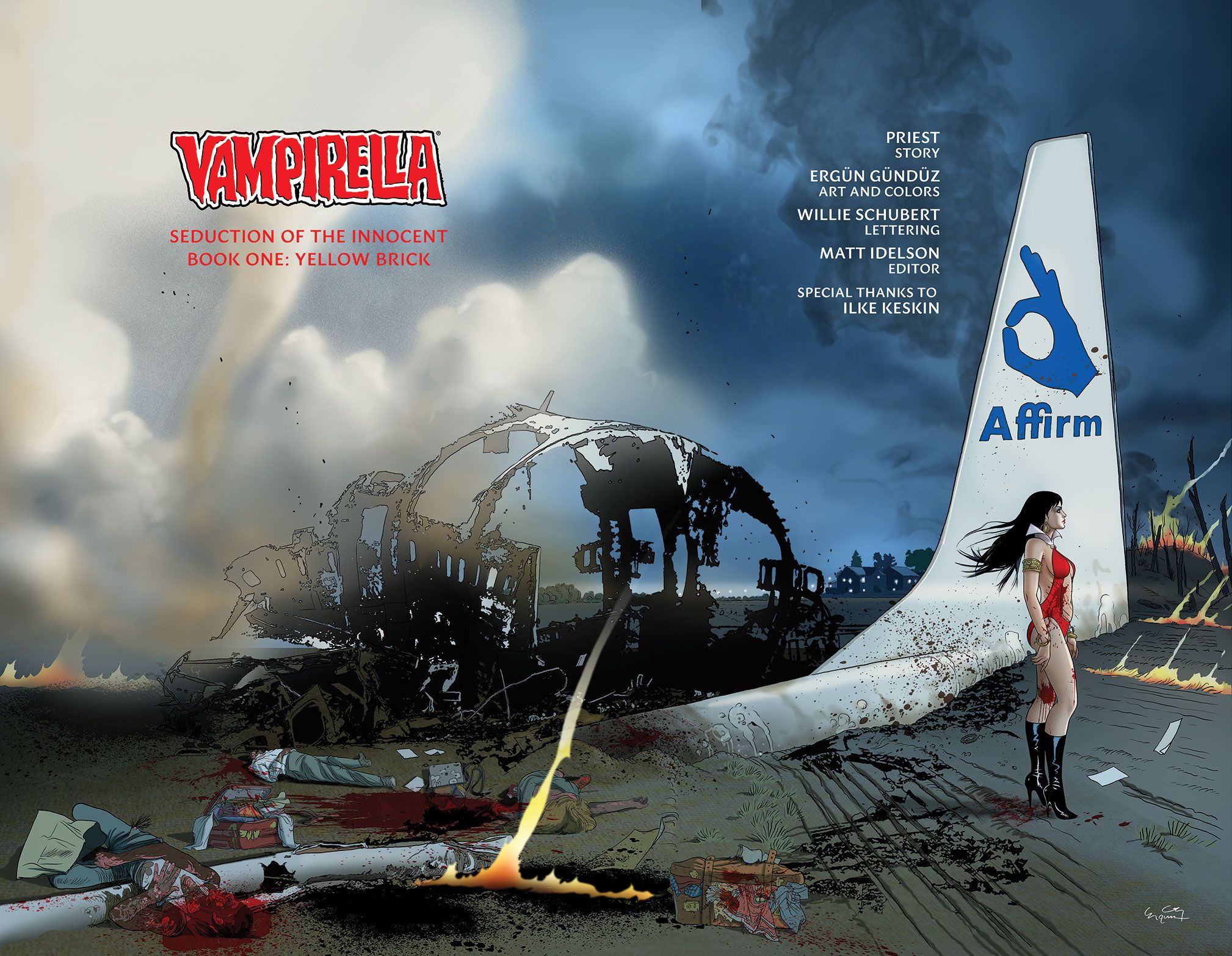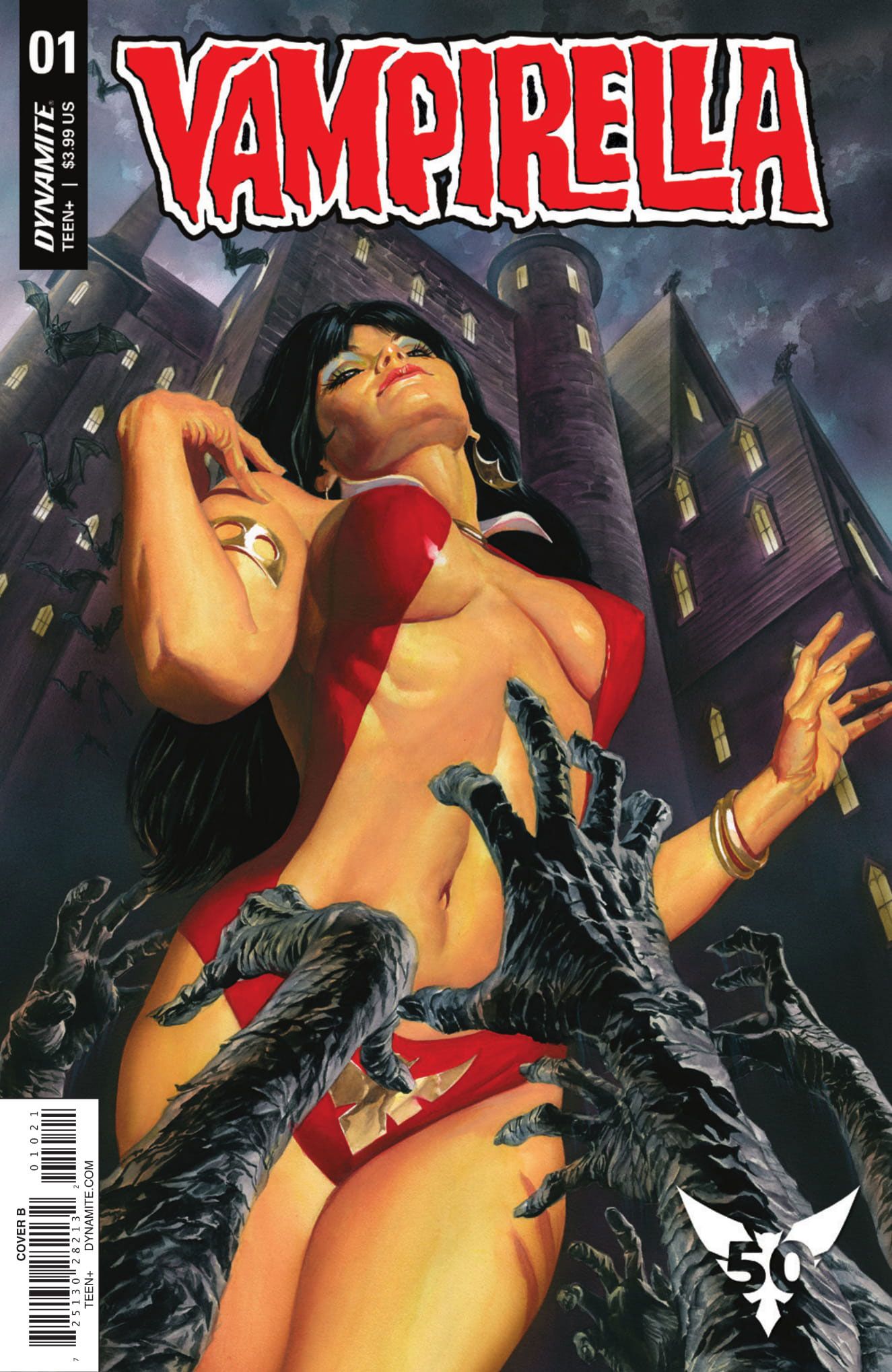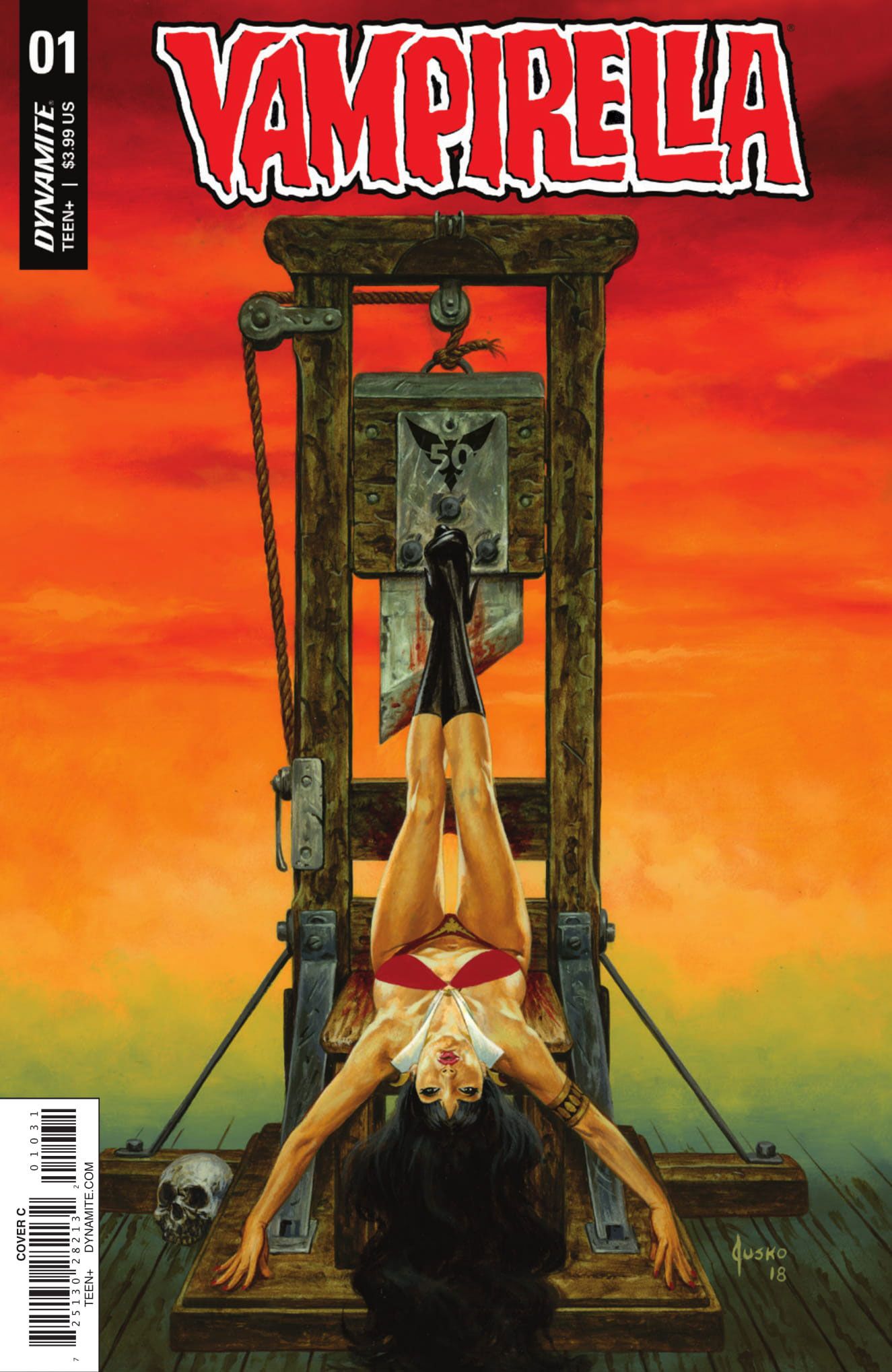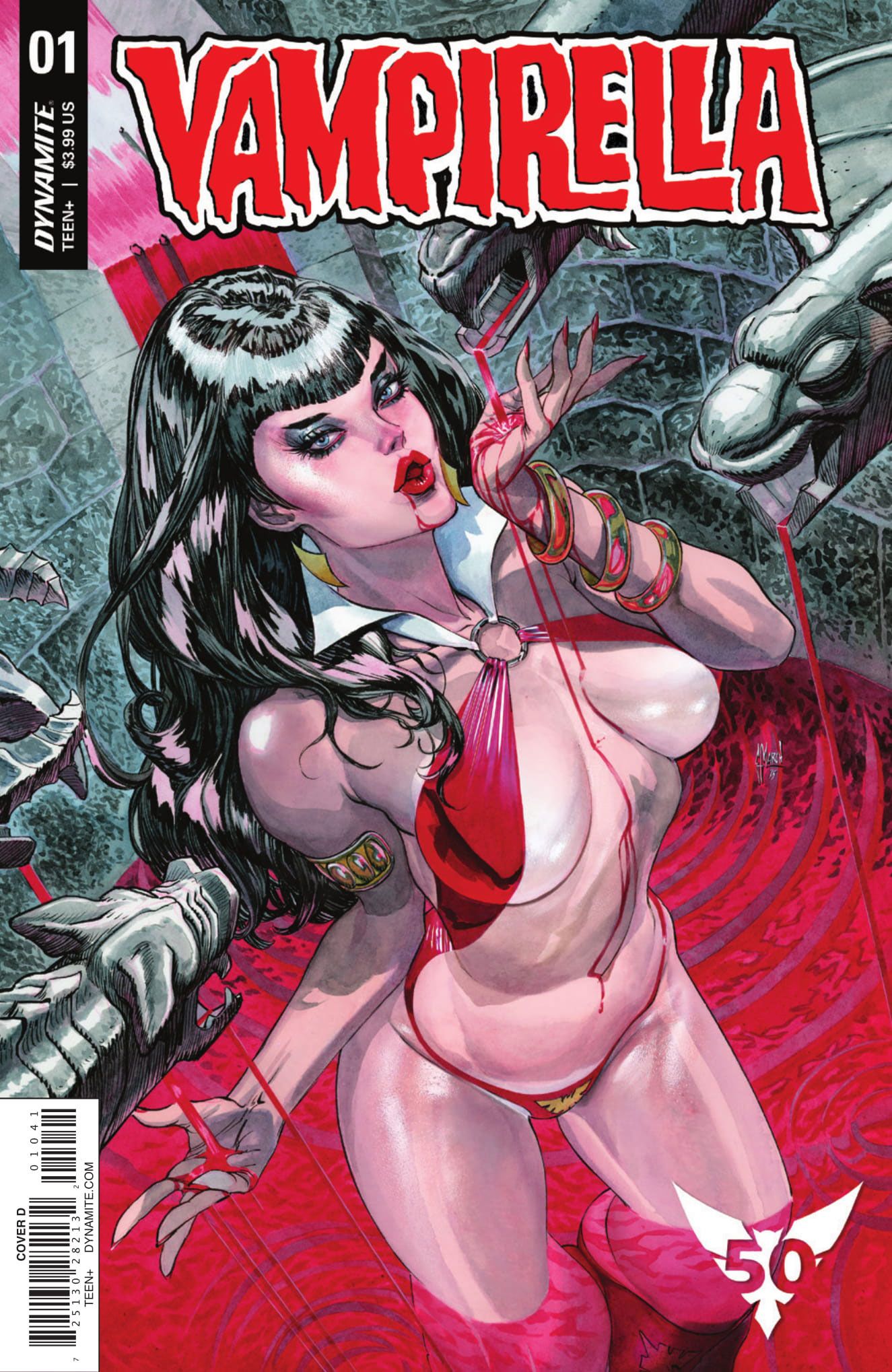Vampirella is back in an all-new ongoing series, just in time for the character's 50th anniversary. In celebration of this milestone, the creative team of Christopher Priest and Ergün Gündüz promise to change how Vampi has been depicted in recent years in order to embrace what she was first created to be.
While Priest and Gündüz's run started with Dynamite Entertainment's Vampirella #0, released on Free Comic Book Day, the new series' first issue doesn't launch until July. In the meantime, Priest spoke with us about his take on Vampirella, some common misconceptions about the character, and where he plans to take her from here.
Vampirella is a character that has been rebooted and relaunched many times over in recent years. Will there be any carry over from other series, or is this a fresh start?
Both. I am staunchly against retcons if they can be avoided. We’re using a couple plot devices that say, essentially, all versions and interpretations of the character are valid. Whichever version of her origin story you want to embrace, go for it. I don’t think it is necessary to invalidate any other interpretation in order to shape my own.
How does the FCBD issue set up the ongoing storyline? The issue seems to introduce several characters into Vampirella's life. Who are they and what role do they play, if any?
Well, Jason, that’s actually called “the plot,” so I wouldn’t want to spoil it :-) The FCBD issue takes place somewhere around issue #8 of our series so it’s quite a bit of whiplash for those just looking in. The characters appearing in it—Katie, Victory, Benny The Witch, and even Stan the Rat are all part of the supporting cast for this run.
Who is Vampirella in this book? We have seen her as both a monster of the night and a superhero in previous runs, but how should she be viewed in your run?
A monstrous superhero! LOL! In issue #3, a male witch has to guilt her into rescuing victims of a downed helicopter.
What I liked most about Christopher Nolan’s The Dark Knight was the picture worked even without the costumes. If Christian Bale never suited up, or if he’d just worn civvies, the film would have held together. They built a strong narrative without regard to batsuits or flying cars.
My Vampirella premise is not terribly original. It’s a story about a woman longing for community; someone who loves and wants to be loved but is often denied both simply because of the prejudices of our modern society. The innocent in our “Seduction of The Innocence” arc is Vampirella herself, a strange visitor form another planet who came to Earth with powers and abilities far beyond those of mortal men.
Vampi is likely the most guileless and most sane character in a book populated by nuts, users, paranoid types, and, of course, her mother. Vampi wants what each of us want: a happy life filled with love and purpose. What she gets, at every turn, is wack jobs trying to kill her, wack jobs trying to exploit her, wack jobs idolizing her, wack jobs politicizing her, wack jobs labeling her.
This is the world as we know it, this new era where every constituency of every possible ideological, political, or religious bent fields armies of pundits shouting down every better angel anyone has these days. Forget Vampirella, if Superman walked this earth, our earth, he’d have to endure the daily crossfire of people accusing him of every imaginable thing.
I am writing a story about a young woman in New York. Now, this young woman just happens to have the strength of ten men, drink blood for sustenance and occasionally sprout horrific bat wings, but in essence she’s just another working girl looking for the same things we all look for while being attacked and, at least by one pre-teen, idolized for simply being who she is. She’s not Buffy, she’s more like the cast of Lena Dunham’s amazing HBO dramedy Girls. Only, you know, with blood sucking and so forth.
As with Deathstroke, I wanted to downsize the premise a bit. With all due respect to the Legion Of Much Better Writers (TM) who’ve handled the character, the book was less appealing to me as a reader when it had Vampirella kind of off-book, behaving more like Conan The Barbarian in a thong. I didn’t enjoy her fighting hordes of vampires and battling all these demons and the Mad God and so forth. I thought the scale was becoming too large and impersonal, the franchise too immersed in and dependent upon the occult when, as I see it, Vampirella was a work of satirical science fiction.
None of which is to say we won’t see demons or witches or Frankenstein’s Monster or what have you, but I’d prefer to broaden Vampirella’s stage a bit so she’s not limited to fighting the devil (or, for that matter, dancing with him). Which means it’s very possible I wasn’t the right audience for the character so God only knows why Dynamite Publisher Nick Barrucci hired me.
My premise is very simple: if there were such a stranger, marooned here from another planet, who dressed like a hooker and behaved like a vampire, what would her life actually be like? How would she find a place, find community, on this world?
Most of Vampirella’s antagonists are borne of assumption. Vampi looks and behaves a certain way, so the world jumps to conclusions about her motives and goals. Those conclusions are all but universally incorrect, but that’s where drama and conflict live. So she becomes a metaphor for what we see now, outside our window.
When I moved into my house, one of my neighbors saw me wearing a durag (a nylon wave cap designed to smooth African American hair) and thought I was a gang banger. So the word went out, up and down the block, that a gang member had moved in. And not long after, a neighbor lady was standing on my lawn, shouting at my house, “Why don’t you just MOVE!” It was beyond stupid, but this is the world we live in. Now, just imagine if I had fangs and wore a thong. That’s the book I’m writing.
Vampirella comes with a controversial costume. Some runs have replaced it entirely, but this book seems to be embracing her roots. Where do you stand on the classic look, and what's your answer to those who criticize the character over the way she's dressed?
Vampirella is the costume. If you change the costume, she’s no longer Vampirella. The costume is, frankly, the only controversial thing about the character. No one really cares about how many people she kills or how many demon hordes she slaughters. All of that violence seems to be just fine with most people. But whoo-boy, that outfit. Shame. Shame!
As I see her, Vampirella comes from a society that is, in large measure, much better adjusted than ours. No racism. No homophobia. Clothing optional. If anything, Vampi looks at us primitive and clearly uncivilized people and wonders about our self-loathing and why we choose to smother ourselves in fabric.
The outfit wasn’t the main thing that gave me pause about writing the series; the over-reliance on occult themes is more bothersome for me. Not just because I’m a Christian but because, from my own creative perspective, basing the franchise solely if not exclusively on occult themes limits the scope of the premise.
Vampirella was created as a science fiction satire—Barbarella with fangs. Somehow, over the years, the property has just become so dug into this devil stuff that the opportunity missed becomes obvious: Vampirella is not, in fact, a vampire. A least not a vampire as we know them from our mythology. She is not “undead” and resents being labeled as such.
Vampirella is immune to daylight. Doesn’t flinch from the cross. Cannot transform into mist or (in my version) a bat. Vampi is an extraterrestrial whose culture may or may not be responsible for what developed in Earth’s mythology but, technically speaking, she is not a vampire. But she behaves a lot like one and therefore becomes a magnet for persecution, criticism, violent attacks and, later in our series, a poster child for a grassroots movement promoting equal rights for vampires.
She hasn’t sought any of that attention. She doesn’t want to be seen as a vampire, her existence relegated to a single attribute. She’s a person. Someone who loves and wants to be loved and who desires the same things in life we all do. She is a gothic metaphor for every person who’s ever suffered loss, isolation, or loneliness. For anyone who’s never quite fit in. Who’s been betrayed, who’s been rejected or denied acceptance because of fill-in-your-single-defining-attribute-here.
When I was a kid, I was better and more universally accepted among my white friends than my black friends. I was bussed to a white school in a Jewish neighborhood, but I wore these thick, Coke bottle eyeglasses. None of my white friends seemed to notice or care, but back home, my glasses became that single defining attribute with which to exclude me from the community.
For some of us it’s race. For some, it’s sexuality or religion. These are universal themes, our very existence being reduced to skin color or a pair of glasses.
Speaking of the physical depiction of Vampirella, Ergün Gündüz's art on the first issue is spectacular. How has it been working with him, a veteran who has mainly worked outside American mainstream comics?
I have a non-sexual man-crush on Ergün. He is an amazing gift, a real surprise. He is a monster illustrator with a wicked sense of humor whose work inspires my own to drift off of the well-paved mainstream roads and into the challenging weeds of independent comics.
Vampirella #1 features long-time villain Von Kreist, and you're bringing back her mother Lilith. How integral will they be to the ongoing story, and can we expect to see other familiar faces pop up?
Most of Vampirella’s rogues gallery will appear in this series (although we may have to piece a few of them back together...). It’s her 50th anniversary, so they have to show up. Could you imagine Batman’s 50th without The Joker...?
Were there any older stories you look to for inspiration for the character and story? Did you go back and look at the Warren and Harris stories to build something new?
I looked at a lot of it from several publishers but, generally speaking, I wanted to take the opportunity to craft my own vision for the character. As a reader, it is exciting for me to see how different authors handle different franchises. Christopher Nolan versus Batfleck, right? While I appreciate the character’s rich legacy, I didn’t want that music playing in my head because it compromises my attempts to find my own voice as opposed to emulating someone else’s.

